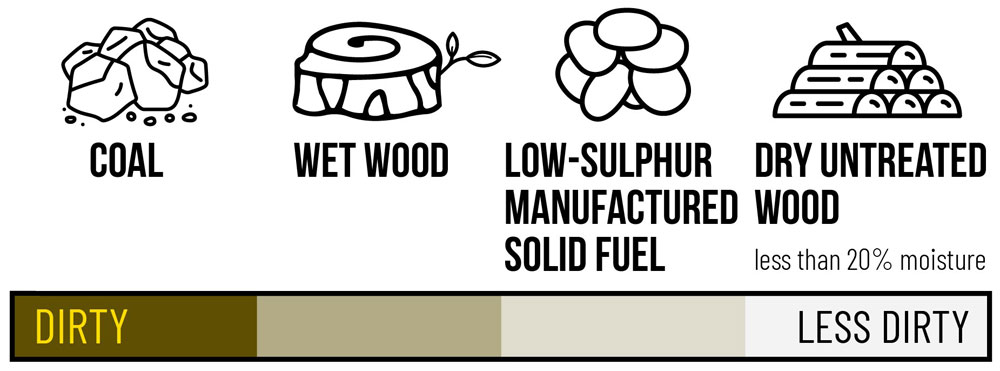How to reduce the impact of your wood burning stove
For some people, burning wood is the only possible option for heating their home, this can include open fires, wood burners, or wood stoves.
If you need to use a wood burner, we encourage you to consider this advice.
How you can reduce harmful pollution from a wood stove
- Always use your open fire or stove in line with the manufacturer and installer’s guidance
- Do not burn wet or treated/painted/glued wood
- Make sure your open fire or stove is installed by a registered/certified installer
- Use a stove thermometer to understand how your wood stove is performing
- Service your stove and sweep your chimney or stove pipe at least once a year
- Make sure that the ventilation system of your wood stove is clean, and has no blockages to prevent carbon monoxide build-up
- Make sure you are using a sustainable wood supplier
Picking the right fuels
Make sure that you use fuels from DEFRA’s certified list of manufactured solid fuels or dry untreated wood. There will be less smoke and better heat efficiency.
The dirtiest fuel to use in a wood burner is coal, and the cleanest is dry untreated wood with less than 20% moisture.

Wet wood
You should not burn wood until it has a moisture content of 20% or less.
Wet wood contains moisture creates smoke and harmful particulates when burnt. As well as being harmful to your health and the environment, this can damage your stove and chimney and is an inefficient way to heat your home.
You can turn wet wood into a cleaner fuel by:
- Ask your supplier for advice on how to properly store and season wood at home
- Store wet logs in a dry area for at least two years before burning
- Use a moisture meter to measure the water content of the wood
Ready to Burn
Always look for the approved ‘Ready to Burn’ logo when buying fuel.
Ready to Burn wood is not only better for your appliance and chimney but will also reduce maintenance and fuel costs. The Ready to Burn logo confirms that the fuel meets the sulphur, moisture, and smoke emission limits.
You can find a list of Ready To Burn fuel providers, as well as advice on how to store firewood indoors and outdoors.
More resources
- Find a sustainable wood fuel supplier
- DEFRA practical advice on wood burning and stoves
- DEFRA guide to buying, storing and seasoning wood
- Moisture meter advice
- DEFRA Guidance: Open fires and wood-burning stoves
- Information leaflet from Burn right: How to get the best from your fire or stove
- Hetas: Advice leaflets for stoves and fuel
- DEFRA guidance: List of approved wood burning appliances for use in SCAs
- DEFRA guidance: List of authorised fuels for use in SCAs
Energy saving advice
More information on energy saving advice, measures, and grants can be found here:

